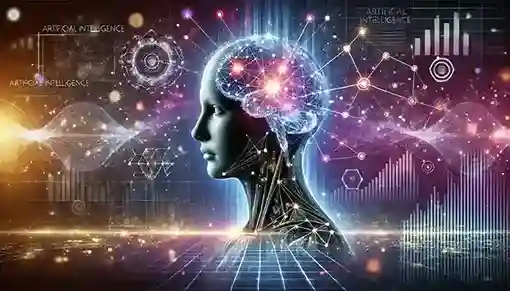why-one-hot-encode-data-in-machine-learning
admin
#why-one-hot-encode-data-in-machine-learning
Understanding Categorical Data in Machine Learning
What is Categorical Data?
Categorical data refers to information divided into specific groups or categories. For instance, when an organization collects biodata of its employees, the resulting data is categorized based on variables such as gender, state of residence, or department. This type of data is called categorical because it can be grouped by these shared attributes.
Why is Categorical Data Important in Machine Learning?
Machine learning algorithms work with numerical data, meaning categorical data must be transformed before being used in predictive modeling. One essential method for converting categorical variables is one-hot encoding, which enhances model accuracy and efficiency.
Examples of Categorical Data:
- A “pet” variable with values: dog, cat.
- A “color” variable with values: red, green, blue.
- A “place” variable with values: first, second, third.
How to Convert Categorical Data for Machine Learning?
Since most machine learning models require numerical input, categorical data is often converted using:
- Integer Encoding
- One-Hot Encoding

What is One-Hot Encoding?
One-hot encoding is a technique used to convert categorical variables into a format that can be provided to machine learning algorithms. It transforms each category value into a new binary column. Each binary column represents one category, where 1 indicates the presence of the category and 0 indicates its absence.
Example of One-Hot Encoding
Original Dataset:
| Bike | Categorical Value | Price |
|---|---|---|
| KTM | 1 | 100 |
| Ninza | 3 | 200 |
| Suzuki | 4 | 300 |
After One-Hot Encoding:
| Price | Bike_KTM | Bike_Ninza | Bike_Suzuki |
|---|---|---|---|
| 100 | 1 | 0 | 0 |
| 200 | 0 | 1 | 0 |
| 300 | 0 | 0 | 1 |
Why Use One-Hot Encoding in Machine Learning?
1. Eliminates Misinterpretation of Data
Unlike integer encoding, one-hot encoding prevents algorithms from assuming that certain categories have a higher or lower ranking.
2. Enhances Compatibility with ML Models
Machine learning models such as logistic regression, neural networks, and decision trees perform better with one-hot encoded data.
3. Supported by Popular ML Libraries
Libraries like scikit-learn (sklearn) provide robust implementations of one-hot encoding for easy use.
How to Implement One-Hot Encoding in Python?
One-hot encoding can be implemented using Python libraries such as pandas and scikit-learn.
Python Code Example:
import pandas as pd
# Sample dataset
data = {
'Bike': ['KTM', 'Ninza', 'Suzuki'],
'Price': [100, 200, 300]
}
# Create a DataFrame
df = pd.DataFrame(data)
# Apply one-hot encoding
df_encoded = pd.get_dummies(df, columns=['Bike'])
print(df_encoded)
Output:
Price Bike_KTM Bike_Ninza Bike_Suzuki
0 100 1 0 0
1 200 0 1 0
2 300 0 0 1
Common Challenges in One-Hot Encoding
1. High-Dimensional Data Issues
- If a categorical variable has too many unique values, one-hot encoding can increase the number of features drastically, leading to the curse of dimensionality.
2. Memory and Performance Constraints
- Storing a large number of binary variables can be inefficient in terms of computational resources.
Solutions:
- Use Feature Selection Techniques: Reduce unnecessary categorical variables.
- Apply Dimensionality Reduction: Principal Component Analysis (PCA) or Feature Hashing can help compress high-dimensional data.
Conclusion
One-hot encoding is a fundamental technique in machine learning, helping to convert categorical data into a usable numerical format. By preventing misinterpretation and enhancing model performance, it remains a crucial step in data preprocessing. Whether you’re working with basic datasets or advanced AI models, mastering one-hot encoding will boost your ability to analyze and utilize categorical data efficiently.
Would you like assistance with implementing one-hot encoding in your machine learning project? Let us know in the comments below!
Table of content
- Introduction to Machine Learning
- Types of Machine Learning
- Types of Classification in Machine Learning
- Supervised Learning
- Unsupervised Learning
- Reinforcement Learning
- Data Preprocessing
- Feature Engineering for Machine Learning
- Handling Missing Data
- Data Normalization and Standardization
- Outlier Detection for Machine Learning
- Machine Learning Models
- Linear Regression
- Logistic Regression
- Decision Trees
- Understanding Decision Trees for Regression
- Support Vector Machines (SVM)
- Random Forests
- Neural Networks
- Model Deployment
- Deploy Salary Prediction Model on Heroku
- Deploying ML Models with Flask
- Using Docker for Model Deployment
- Advanced Machine Learning Concepts
- Hyperparameter Tuning
- Cross-Validation Techniques
- Ensemble Learning (Bagging and Boosting)
- Dimensionality Reduction Techniques (PCA, LDA)
- Deep Learning Basics
- Introduction to Neural Networks
- Convolutional Neural Networks (CNNs)
- Recurrent Neural Networks (RNNs)
- Transfer Learning
- Real-World Applications
- Natural Language Processing (NLP)
- Image Recognition
- Recommendation Systems
- Predictive Analytics
- Machine Learning Tools and Libraries
- Python and scikit-learn
- TensorFlow and Keras
- PyTorch
- Apache Spark MLlib
- Interview Preparation
- Basic Machine Learning Interview Questions
- Scenario-Based Questions
- Advanced Machine Learning Concepts
- Best Practices in Machine Learning
- Performance Optimization
- Handling Imbalanced Datasets
- Model Explainability (SHAP, LIME)
- Security and Bias Mitigation
- FAQs and Troubleshooting
- Frequently Asked Questions
- Troubleshooting Common ML Errors
- Resources and References
- Recommended Books
- Official Documentation
- Online Courses and Tutorials